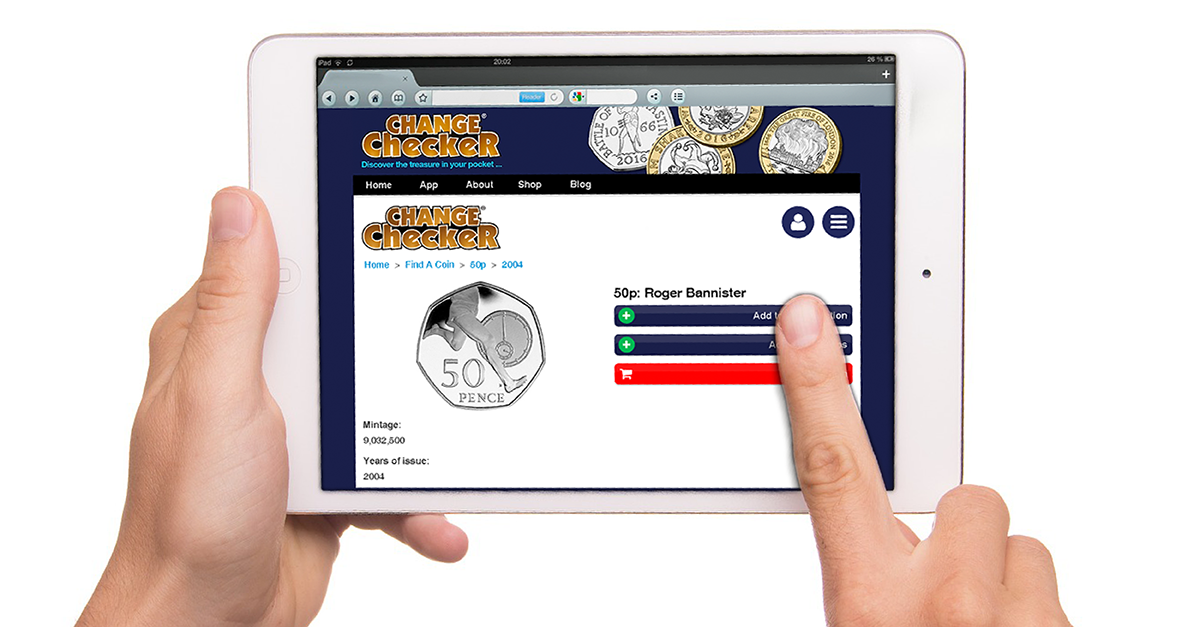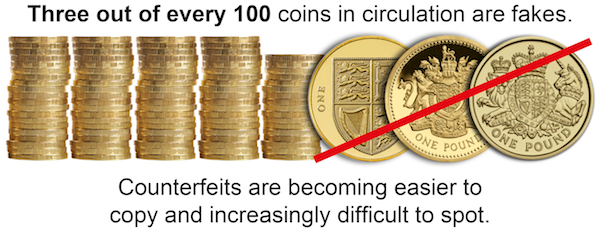General info
Are there valuable coins in your pocket?
Although the UK has an enviable record for producing coins of impeccable quality, there has been the odd occasion in the past where a ‘mistake’ has managed to get into circulation. Here are my top three favourites, and if you own one, you can consider yourself very lucky indeed!
1. 1983 Two ‘New’ Pence
 When the UK switched to decimal coinage in 1971, it was decided to include the word ‘new’ in the denomination on some of our coins to help differentiate the old from the new. By 1982 the coins were no longer new so the word was dropped, and the 2p design changed from ‘New Pence’ to ‘Two Pence’. However, a mistake was made and a small number of 1983 coins were struck with the inscription ‘New Pence’. Recently a handful have emerged on Ebay for around £100, and a perfect example of the coin is catalogued at £600.
When the UK switched to decimal coinage in 1971, it was decided to include the word ‘new’ in the denomination on some of our coins to help differentiate the old from the new. By 1982 the coins were no longer new so the word was dropped, and the 2p design changed from ‘New Pence’ to ‘Two Pence’. However, a mistake was made and a small number of 1983 coins were struck with the inscription ‘New Pence’. Recently a handful have emerged on Ebay for around £100, and a perfect example of the coin is catalogued at £600.
2. 2011 Aquatics 50p
The series of twenty-nine 50ps issued for the Olympic Games have become some of the most sought after UK decimal coins ever issued. But one coin could actually be rarer than  the others. The Aquatics 50p was initially struck with the impression of the athlete underwater (see left coin) – but this was swiftly changed to make the swimmer’s face clearer (coin on the right). None appear to have recorded an officially catalogued selling price yet, but when they do this ‘error’ coin could end up as the most valuable of the lot.
the others. The Aquatics 50p was initially struck with the impression of the athlete underwater (see left coin) – but this was swiftly changed to make the swimmer’s face clearer (coin on the right). None appear to have recorded an officially catalogued selling price yet, but when they do this ‘error’ coin could end up as the most valuable of the lot.
3. The Undated 20p
We often get comments on our Facebook page about people who have found an undated 20p. It has to be one of the most talked about ‘mules’ of the decade – where the obverse and the reverse of a coin don’t match. The result of this mistake led to the first ‘undated’ UK coin for over 300 years – and 200,000 of them made it into circulation. However, banks and The Royal Mint swiftly tried to withdraw them, so many will have been destroyed – but a handful will undoubtedly remain. Initial hysteria led to some crazy prices being quoted for this coin, but in the future when the market has settled down it could well be one of the most sought after definitive pieces of the early 21st century.
Special mention: The Edward VIII Threepence
Now you won’t find this in your change, but if your grandparents have some coins at the back of the cupboard it might be worth having a quick look through in case a King Edward VIII Threepence is hiding there. Famously the King abdicated before any coins bearing his image could be struck, but a handful of 3d coins were produced as test pieces. Some of them made their way into private hands, and one recently came up at auction for £30,000!
Suffice to say, it’s worth keeping an eye on your change, as you may well have an error coin in your pocket that hasn’t even been discovered yet! And if you do, there’s every chance you could be quids in!
Want to start your own collection?
You can find, collect and even swap all of the UK’s commemorative circulating coins with Change Checker – take a look at the app here: www.changechecker.org
Could you spot a fake £1 coin?
One Pound coins were first issued in 1983, but one in every thirty £1 coins is now a fake. These forgeries cost the Government £2million every year.
Counterfeits £1 coins are becoming easier to copy and harder to spot which is why The Royal Mint have decided to issue a brand new 12-sided £1 coin which is billed to become the most secure circulating coin in the world.
The new 12-sided £1 coin will be an ultra-secure replacement which will be harder for forgers to copy. They will also last 5 years longer than the current round pound coins.
The figure of counterfeit coins has more than doubled in the past decade, and shockingly now three out of every 100 coins in circulation are fakes.
Counterfeits are becoming a closer match to the real thing, making it increasingly difficult for consumers to spot the difference. Usually, the only way you would notice a fake is if it were rejected from a vending or ticket machine.
The majority of coins are stamped out, which involves pressing a piece of metal against a specially cut die. However they can differ from the genuine article in many ways.
Here are a few tell-tale signs to look out for;
Appearance
The coin has been circulating for a long time according to its date of issue, yet it appears surprisingly new. Genuine pound coins lose their lustre when they have been in circulation for a number of years. Also fake coins tend to be more yellow or golden than the real thing.
Design
The design on the reverse doesn’t match the official design for the year it was issued – you can find all these designs on the Change Checker website. The first was introduced in 1983 and the reverse design has changed every year since.
Edge lettering
The lettering or inscription on the edge of a genuine £1 coin must correspond with the year date. Often the milled edge on counterfeits isn’t well defined and the lettering is uneven, badly spaced or indistinct.
Alignment
Hold the coin so that the Queen’s head is upright and facing you – the design on the reverse side should also be upright and not at an angle.
Unlike notes, coins are not usually banked, but instead circulate between the till and the customer’s pocket and back again which makes them more difficult to remove from circulation. The probability is that you have already used a counterfeit £1 coin as payment for something without realising, such is the quality of the fakes.
Remember, a fake £1 coin is not only absolutely worthless but it’s also illegal to pass it on to anyone else.
All the more reason to be regularly checking your change…
The Changing Face of our Queen
Heads or tails? Well, in reality for Change Checkers, the answer is usually tails.
The reverse, or ‘tails’ side of the coin has always been the place to commemorate important anniversaries or make design changes, whilst the Queen retains her same recognisable profile on the obverse – the ‘heads’ side.
Except her profile hasn’t always been the same.
Something which often goes un-noticed on our circulating coinage is the changing face of our Queen over the years. In fact, since decimalisation, three different portraits of Queen Elizabeth II have adorned the coins in our change.
1969-1984: Arnold Machin
With decimalisation approaching, it was decided to refresh the Queen’s portrait with Arnold Machin’s new sculpture of her wearing a tiara. It was commissioned in 1964 and first appeared in 1969 on the new 5p and 10p coins. The portrait may seem very familiar – as it was introduced on stamps in 1967 and remains to this day.
1985 – 1997: Raphael Maklouf
Raphael Maklouf’s effigy replaced Machin’s in 1985 and depicts the Queen wearing the Royal Diadem which she wears to and from the State Opening of Parliament. Some critics accused him of sculpting the Queen as ‘flatteringly young’, but his response was that he aimed to create a symbol “Regal and ageless”.
1998 – Current: Ian Rank-Broadley FRBS
The current Queen’s head on our coinage was designed in 1997 by Ian Rank-Broadley. Created to fill the full circle of the coin, its larger size was a deliberate response to the smaller 5p and 10p coins in circulation. A noticeably more mature portrayal of Her Majesty, Rank-Broadley aimed to show the Queen with “poise and bearing”.
You can now collect all 3 of these portraits for both 1p and 2p denominations in a brand new Change Checker Collector’s Card.
Included with the card is a FREE coin you can’t find in your change – a pre-decimal penny featuring Mary Gillick’s portrayal of an uncrowned young Queen.
Click here to find out more






